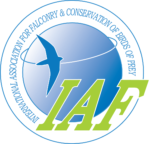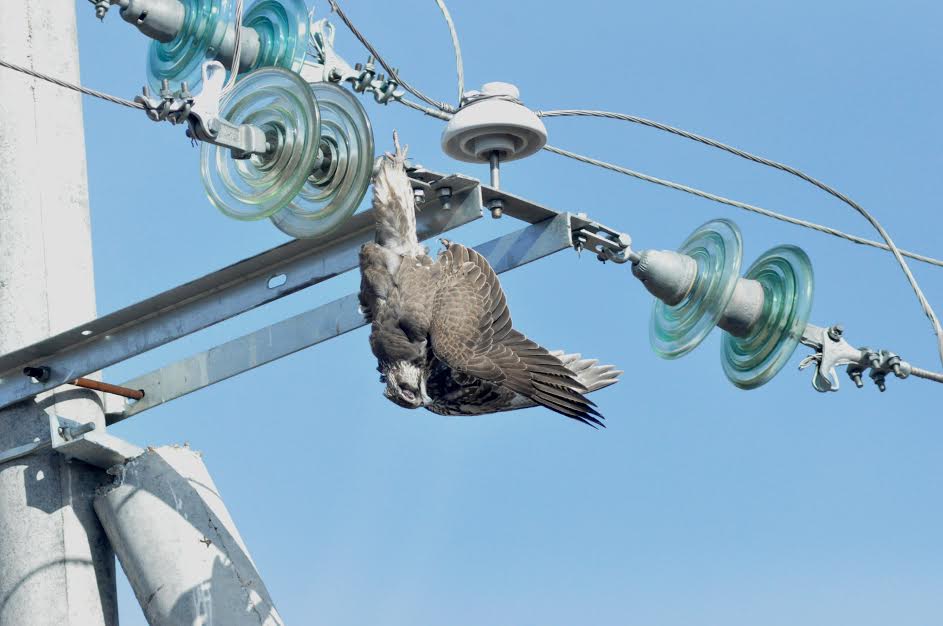
Flashnews:
First results of the project in Mongolia
The Mongolian Falconry Association has successfully initiated the “Hand To Help” project to resolve the issue of Saker Falcons (the national bird) dying in great numbers from electrocution on medium-voltage lines.
The International Association for Falconry and Conservation of Birds of Prey (IAF) supported the project and organized a crowdfunding campaign to collect donations. This eventually provided enough funds to retrofit most of the powerlines in the Argalant region, the project’s primary focus.
The Mohamed bin Zayed Raptor Fund (MBZRF) provided expert knowledge, consultations, and financial contribution to remediate remaining parts of the Argalant line.
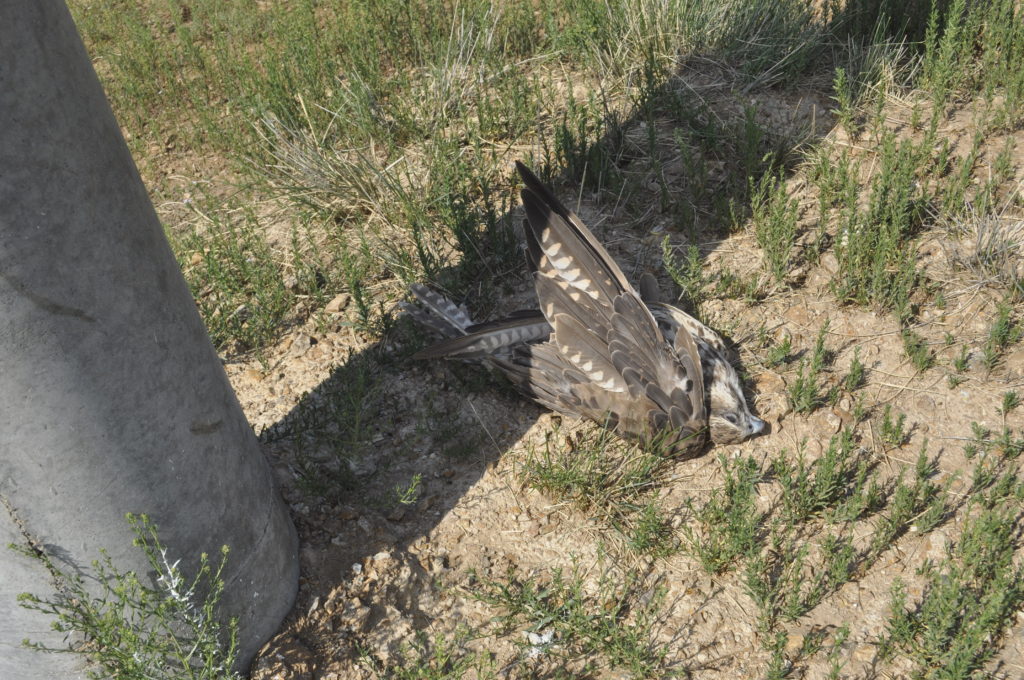
Dead Saker near a powerline pole
The lines are also killing many other large birds, including corvids and other predators.
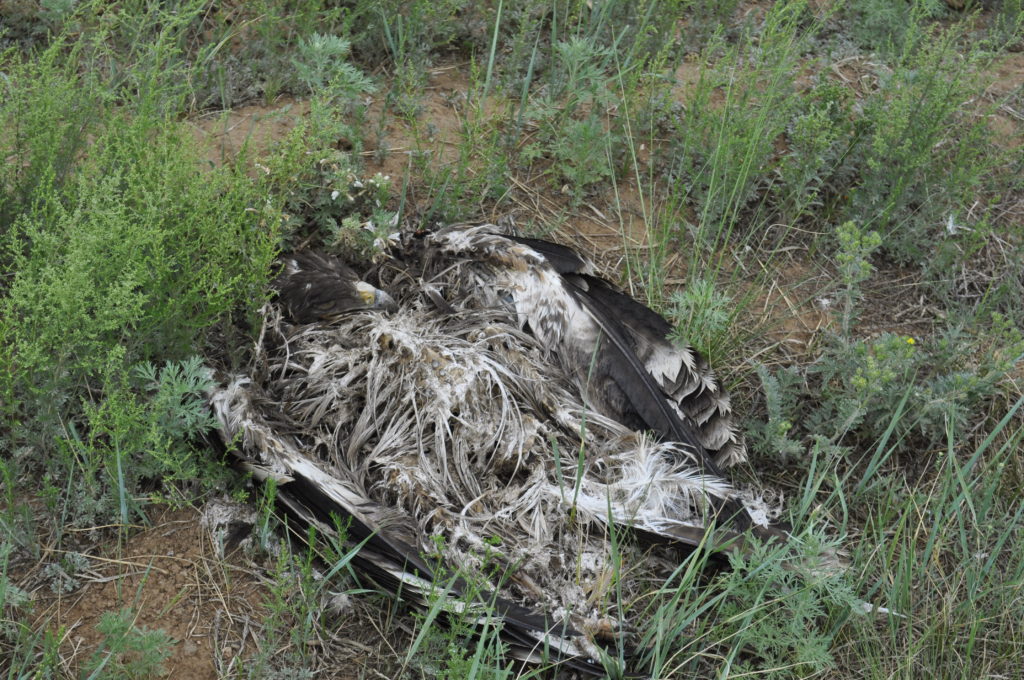
Dead Steppe eagle near a powerline pole

Dead Raven near a powerline pole
The high mortality rate of Saker is simply unsustainable as it is. This is number one threat to Saker populations in Central Asia, according to Saker Global Action Plan.
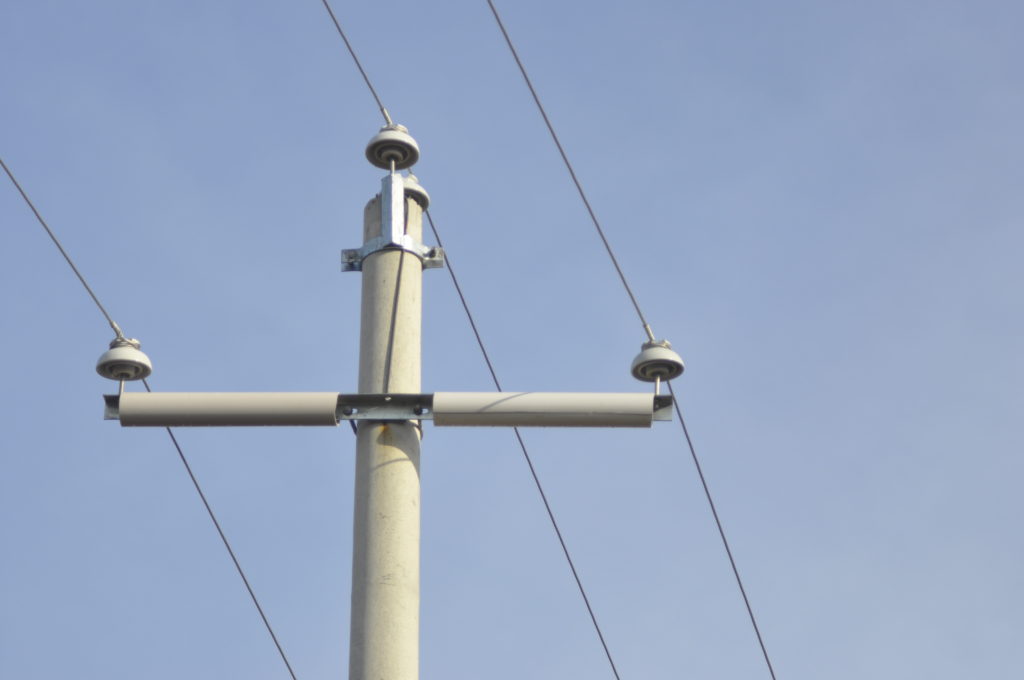
The cost-effective method of making poles safe (designed by MBZRF specialists)
The Hungarian company SZATUNA Kft donated special covers for securing 20 poles.
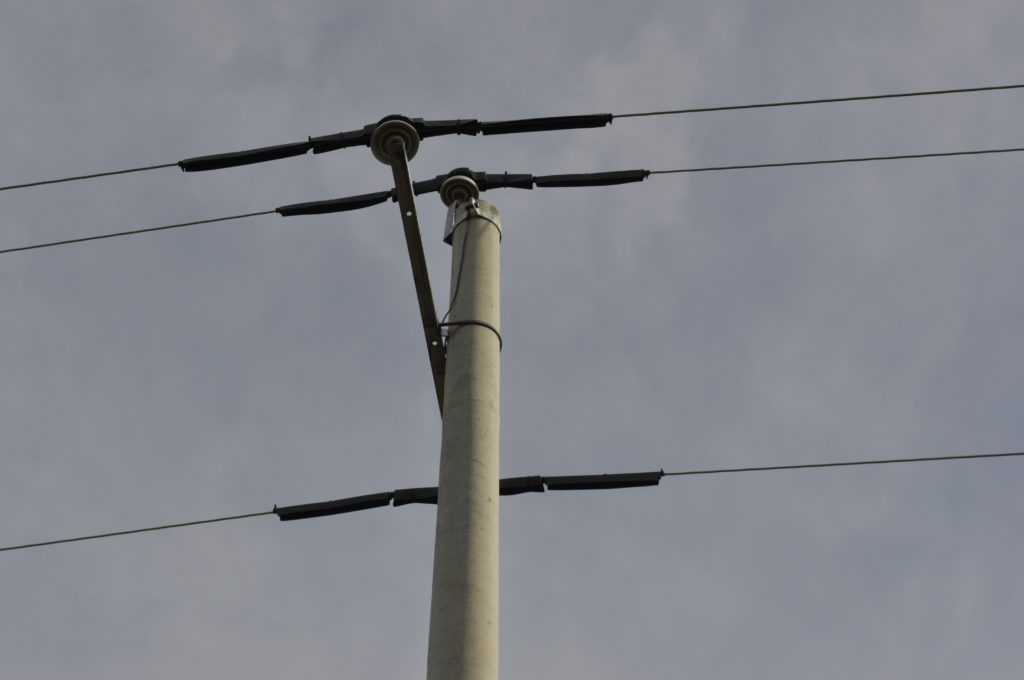
Bird Protection Insulator Covers donated by Szatuna Kft on the pole
In Mongolia, we are looking for the most cost-effective and easily applied ways of securing powerlines. This is not only for the Saker but for all bird species we are finding dead under poles.
The MBZRF specialists helped to develop this simple method and provided some funds to finish remediation work of the whole Argalant powerline. With such an approach, it is possible to get very fast mitigation on a large scale.
On July 6th, the first 67 poles of the project were secured. This powerline belongs to Khos Bers Co Ltd, and is comprised of 30km of medium-voltage lines across a total of 156 concrete poles in the Argalant sum.
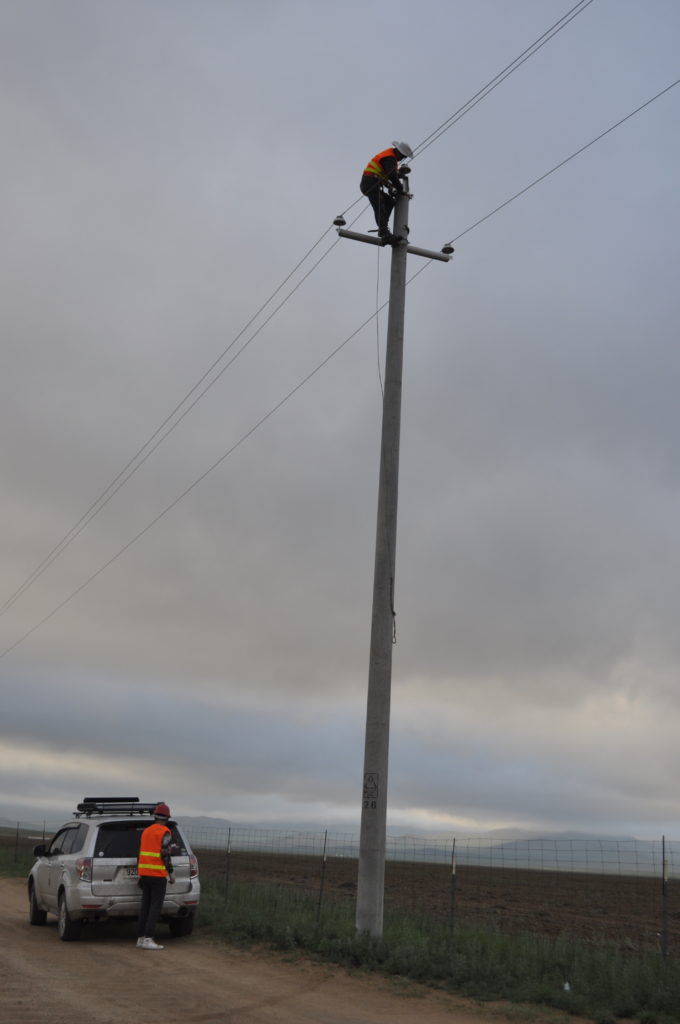
Remediation work in progress

It is necessary to switch off the whole powerline to do the remediation work.

Technician from power company Khos Bers Co Ltd at work
During the project, Mongolian falconers presented the implementation of the Helping Hand project to the governor of Argalant sum of Tuv aimag Batjargal B, ranger Shirnen N. and the heads of Khos Bers Co Ltd and Niislel Rotary Club. We expressed our gratitude to them for supporting the cause to protect Saker Falcons.

Presentation to local authorities and powerline company Khos Bers Co Ltd

Secured poles are marked with a special sign. Main donators will have their own marked poles with their logo and name
The next stage of the project will be executed after the national holiday of Mongolia (July 22), when the remaining 89 poles will be secured.

This pole is now safe for Sakers
Dead birds were collected from under the line to give us a way to measure the effectiveness of the remediation work. This project will serve as a pilot for large-scale work planned for next season by the Mohamed bin Zayed Raptor Fund.

Dead birds are collected from under the poles
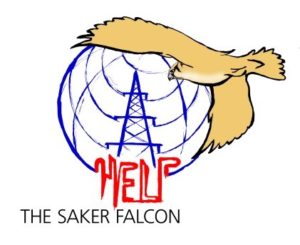 The International Association for Falconry and Conservation of Birds of Prey and Mongolian Falconry Association are collecting funds to save Saker Falcons from electrocution.
The International Association for Falconry and Conservation of Birds of Prey and Mongolian Falconry Association are collecting funds to save Saker Falcons from electrocution.
On average, one Saker is electrocuted in Mongolia every two hours.
The estimated minimum number of Sakers electrocuted each year is 4,000.
With the money collected, we will finance the retrofitting of lines which are most dangerous for Sakers in Mongolia and Asia. Retrofitting of a single pole costs approximately €150.
Whatever YOU donate will help us to stop the massacre of Sakers.
Even if we change only one pole, many Sakers will be saved. The more we collect the better.
There are a few thousand of thdangerous poles in Mongolia, let’s start with the first one.
“HAND to HELP”
Project introduction
The project aims to assist ecologists and energy specialists in immediately implementing methods to stop the deaths of Saker Falcons, by electrocution from power lines. The project was initiated by the International Associations for Falconry and Conservation of Birds of Prey (IAF), and falconers from Uzbekistan, Kazakhstan, Kirgizstan, Turkmenistan, PRC, South Korea, Japan and Georgia and will be implemented by the Mongolian Falconry Association. The project is to be implemented as a model and will be open to all participants.
The main goal of the project is to prevent the deaths of these falcons from power lines. The idea was based on concrete research, surveys and observation by international falconers, scientists and individuals that carry the heritage of falconry and their passion to save and protect this species.
Currently, most of the power lines in Mongolia below 35kV have been built using incorrect standards, bringing greater risks to birds of prey. Record show that a total of roughly 4,000 Saker die annually as a result of this. There are modern methods to prevent these deaths, such as using underground lines or equipping the poles with protective tools. Unfortunately, equipping the power lines with protective tools will require a lot of money because the power line network covers thousands of kilometres among the vast terrain of Mongolia. Therefore, to take priority measures to ensure the safety of Saker Falcons and for the most rational investment of funds, we chose the territory of the Argalant area as the most dangerous sections of power transmission lines, Here, in the spring and autumn of 2017, a total of 98 dead Saker Falcons were counted on concrete power lines over a distance of only 22km.
In order to measure the scale of Saker Falcon deaths in this region of Argalant and Mongolia in general, we plan to conduct visits to the other most dangerous sections of the power transmission lines during the season when the mass death of these birds occur, namely July and August. In addition, to create broad public support and create a positive public opinion about this conservation issue, we plan to involve one or two foreign project participants to participate in these research trips. Data from these trips will be regularly posted on our webpage. Using this data and the media (Facebook, Instagram, etc.), we want to draw attention not only to the state environmental authorities but also Mongolian and foreign media.

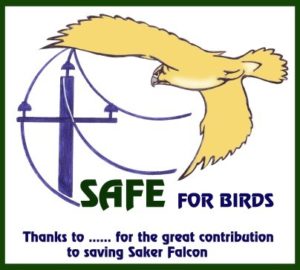
Our team is planning to put “Killer pole”, “Power line safe for birds” signs on power lines during the implementation of our project. Names of our donors will be written on these signs. Information and updates regarding these signs will be published on our website regularly.
We will regularly provide our partners, supporters and donors with information of the “Hand to Help” project such as process, suggestions, advice, installation details, methods and tools, and other related findings and successes.
We will regularly provide our partners, supporters and donators with information of the “Hand to Help” project such as process, suggestions, advice, installation details, methods and tools and other related findings and successes.
Our project welcomes any national and international individuals, entities and organizations who wish to cooperate.
GOAL
The main goal of the “HAND TO HELP” project is to protect the Saker Falcon from electrocution by overhead power lines in the territory of Argalant, Tuv province.
OBJECTIVE
We have chosen the area of Argalant of Tuv province as our project location, due to the large number of electrocutions here in spring and autumn of 2017. By equipping the medium-voltage poles with bird protection tools, we can decrease these deaths significantly.
PROJECT IMPLEMENTATION PERIOD
The project duration is approximately 17 months and the implementation period is between May 8, 2017 and October 10, 2018.
TOOLS
The project implementation stages:
Research: Select the model territory. Carry out field studies in the model area to calculate the actual scale of Saker electrocutions.
Organization: Establish cooperation with regional network companies and determine ways to work with them to solve the problem.
Financing: The project is to be funded by donations and the disbursement information will be open to the public.
Technique: Electrical poles are to be equipped with special tools and the results analysed.
Information: Progress and updates are all to be published on the website
The first two stages have been implemented successfully and the results are shown below.
PROJECT LOCATION
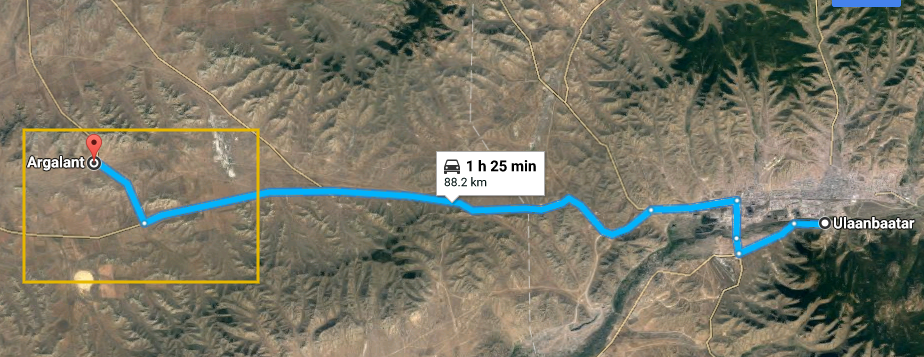
The Argalant area is located close to the capital Ulaanbaatar. The location is rich with Brandt`s Voles (Lasiopodomys brandti), one of the main food sources of the Saker, an abundance of nesting sites and the seasonal migratory route passes through the location. The landscape is mountainous and treeless, with the hollow Terkhiin Tsagaan lake area and some crop fields in the lowlands. The area is generally open, a reason why Saker Falcons use these power poles so much as perches for hunting or resting. This in turn poses a high risk of electrocution.
Survey
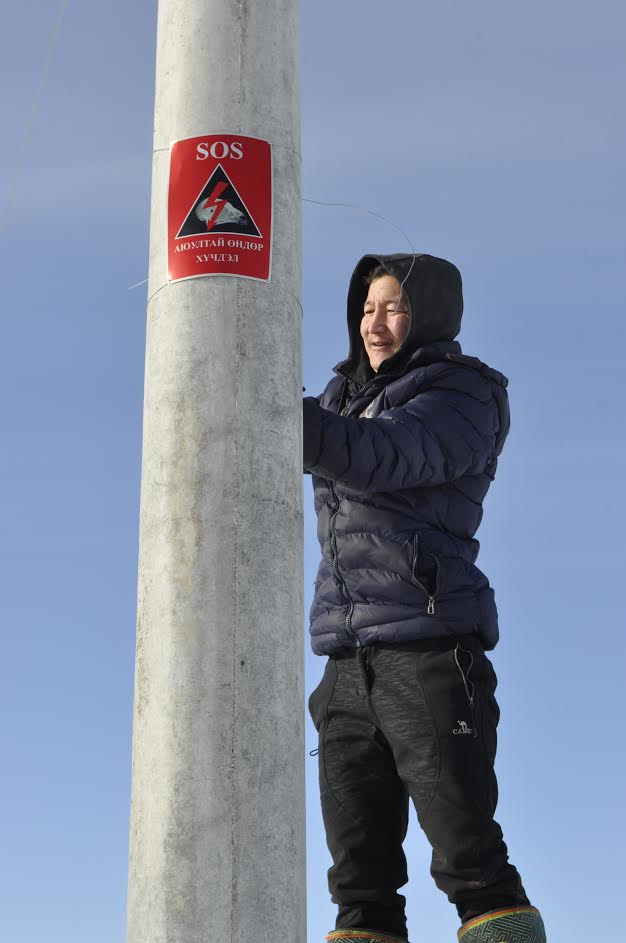
During the implementation of the project, we have carried out research on the 50km-long 10kV electrical distribution line within the Argalant area. Going by the structure of the electrical poles, food availability near the poles, geographical location and density of the bird deaths, we have detected the three most dangerous fields in the area (Picture 3). In areas marked “A”, “B” and “C”, we have marked the most dangerous poles with the sign “Killer pole”( Picture 2). The electrical poles between points 1 and 2 and 1 and 4 have been initially built with from wood. But due to damage, the wooden pole bases have been partly replaced by concrete ones (Picture 5). We have found 50% of the dead Saker falcon bodies between point 1 and 2. The total length of the section of concrete poles is 22km. At selected power lines, we examined the surroundings of all concrete poles. Wooden supports are examined selectively.
Research was conducted in spring and autumn. The initial research took place in the beginning of May and covered a distance of 40km. A total of 6 fresh and 15 decayed corpses of Saker Falcons were collected. All the corpses were collected and destroyed in order to avoid re-registration during the autumn counts.
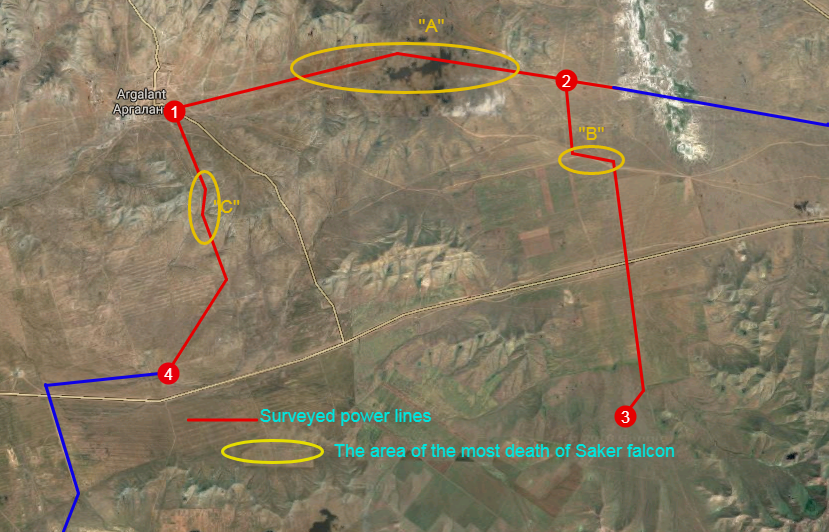
The following research took place on August 27, 2017 along a 50km stretch of power line. A total of 68 dead Saker Falcons were counted. During this survey, a 3.1km power line was also observed in area “A” (Picture 4). The lowlands between two mountains consisted of 32 wooden and 9 concrete-based poles.
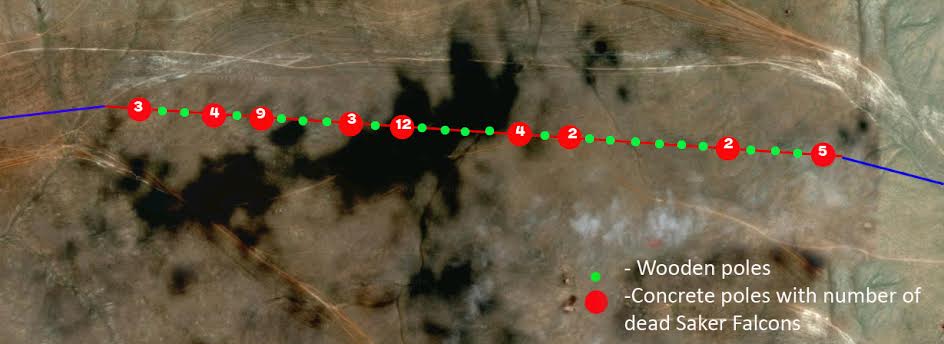
We have observed that Saker Falcons intentionally preferred sitting on the concrete based poles rather than the wood-based poles. The “T” shaped concrete-based poles, particularly, attract the attention of the Saker falcons. This was still evident due to the fact that most of the falcons arrived to spend the night directly on these poles. It was on this small section of power lines that we found 12 Saker Falcon corpses at the bottom of a single concrete pole, shown in Pictures 6. In total, we counted 44 Saker corpses. A video was recorded as evidence.
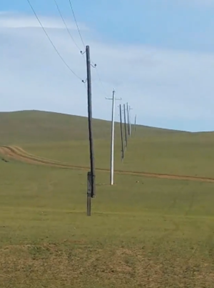
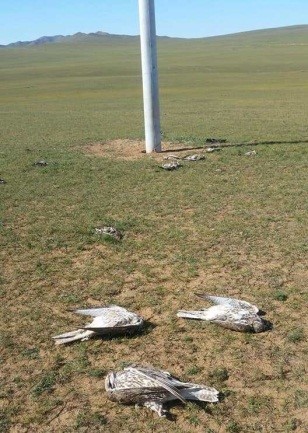
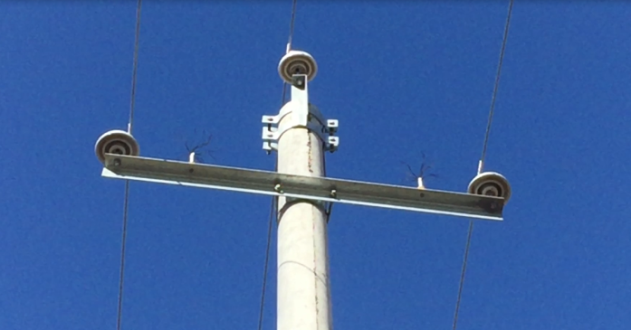
The power line in area “C”, (point 1 to 4), follows the mountain top and mostly consisted of concrete poles. Thus each pole had 1-3 dead Sakers below it. Also, additional equipment was installed on the iron rail (see Picture 7). Despite the additional equipping, 1-3 dead Sakers were found below each pole. This shows that the existing equipping is not helpful in decreasing the number of Saker Falcon deaths.
Power lines in area “В” (point 2 to 3), was located in lowlands and went through crops and crossed the main road. We had difficulty conducting research in this area due to the restrictive fences built to prevent the entrance of livestock on to crops. The dead bodies of the Sakers in the area had been removed by the farmers from their fields. As we did research on the outer area of the crop fields, we usually found 1-4 Saker bodies below the anchor poles (Pictures 8, 9, 10).
We do not like those pictures – YOU can help here to stop it


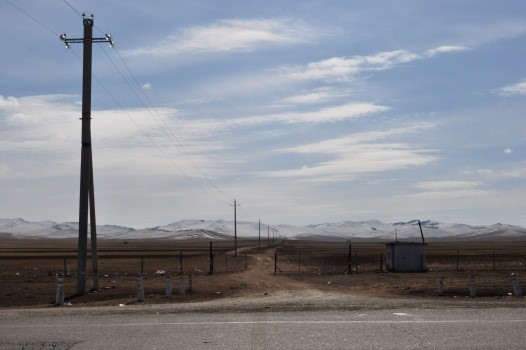
The third survey took place on September 11, on the 50km line. A total of 9 new Saker Falcon bodies were found.
The last survey took place on October 25. Due to heavy snowfall, we were able to do research only on the line between A and B. Two bodies of Upland Buzzards (Buteo hemilasius) were found, but no Saker falcons bodies.
During four survey trips along this 50km stretch of power line, we found 98 corpses of dead Saker Falcons. Of these, about 90% were young falcons. It is obvious that calculation of the death of Saker Falcons on the power lines based on four survey trips gives significantly underestimated figures, since a significant part of the dead falcons (up to 50% or more) is utilized by animal predators and scavengers. In addition, there is the issue of elimination of falcon remains by people. Thus, based on our research along the 50km 10kV power line in Argalant area and including natural factors, we are assuming approximately a total of 120-130 Saker deaths in a year.
During our research, we also registered corpses of other bird species as well.
| No. | Species | Number |
| 1 | Steppe eagle | 1 |
| 2 | Upland buzzard | 46 |
| 3 | Common kestrel | 1 |
| 4 | Raven | 19 |
| 5 | Carrion crow | 5 |
| 6 | Eurasian eagle owl | 1 |
| 7 | Saker falcon | 98 |
| Total | 171 |
Conclusion
The main concerns causing the death of the birds of prey are thought to be the combination of at least three factors: Electrical poles that are dangerous to birds, concentration of large number of birds, and humid and windy weather. There is also a correlation between the death of the birds and the season. In spring time, the mortality rate of non-breeding birds is high due to migration movements searching for richer food sources. From July to August, due to the increasing number of nestlings and rainy humid weather, the death rate increases further.
Help the Sakers and donate now
Organization and technical tasks
For the initial stages, we contacted the regional electrical grid company in charge of power line maintenance, Energy office of Tuv province, Energy Development Center and Ulaanbaatar Electricity Distribution Network Company. We informed them about the large numbers of Saker Falcon deaths and exchanged our opinions on how we can cooperate to solve the matter and protect the birds.
Unfortunately, despite the long-term study of the problem, little has been done to solve it. Long-term studies by specialists have shown the extremely low effectiveness of various “barrier” devices, including the widely used false insulators and perch deterrents and deflectors. These somewhat reduce the number of deaths but do not solve the problem. In fact, the use of outdated inefficient technical solutions in the design, construction and reconstruction of electrical networks causes additional costs associated with the re-equipping of energy lines in the future. At the existing transmission lines, modern effective polymer-bird protective devices have proved somehow successful. However, due to the extremely limited application of these methods of protection and specific climate conditions in Mongolia, it is not yet possible to put it into practice. Currently, we are studying a number of modern international experiments to protect birds from medium voltage and discussing the issue of their adaptation to the climate of our country with IAF and Wildlife Science and Conservation Center of Mongolia.
In order to further protect Saker Falcons in Argalant, it is necessary to exclude the construction of dangerous design features during the replacement of each old pole for a new concrete one, and to include the additional cost of proper construction and find the ways for further financing.
Results
- The “Hand to Help” project will be a good example of a successful public (Ministry of Energy) and private partnership.
- The Prevention of Saker Falcon deaths in the area of Argalant by equipping electric poles with special protective tools.
- The Implementation of the project as a best practice to be used in other rural areas where death from power-line electrocution is high.
- In the future, it may be necessary to modernize the entire transmission line in the model area of Argalant, replacing dangerous supports and wires with alternative safe.
“Hand to Help” will be the first sample project that brings together international falconry communities in saving and protecting the Saker Falcons.
Project implementation
This project is to be implemented by the Mongolian Falconry Association and its members.
PROJECT PARTNERS:




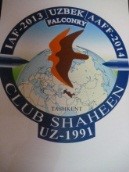




Bakhyt Karnakbaev, Kazakhstan
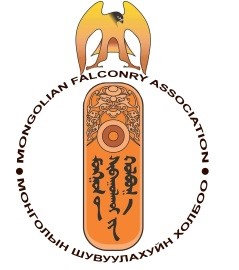
Mongolian Falconry Association is a non-government and one of the premier falconry organizations in the country. The purpose of the Mongolian Falconry Association is to restore the ancient Mongolian tradition of hunting with birds of prey as a Mongolian cultural heritage, to promote conservation of the birds of prey and an appreciation of their value in nature and in wildlife conservation programs.
